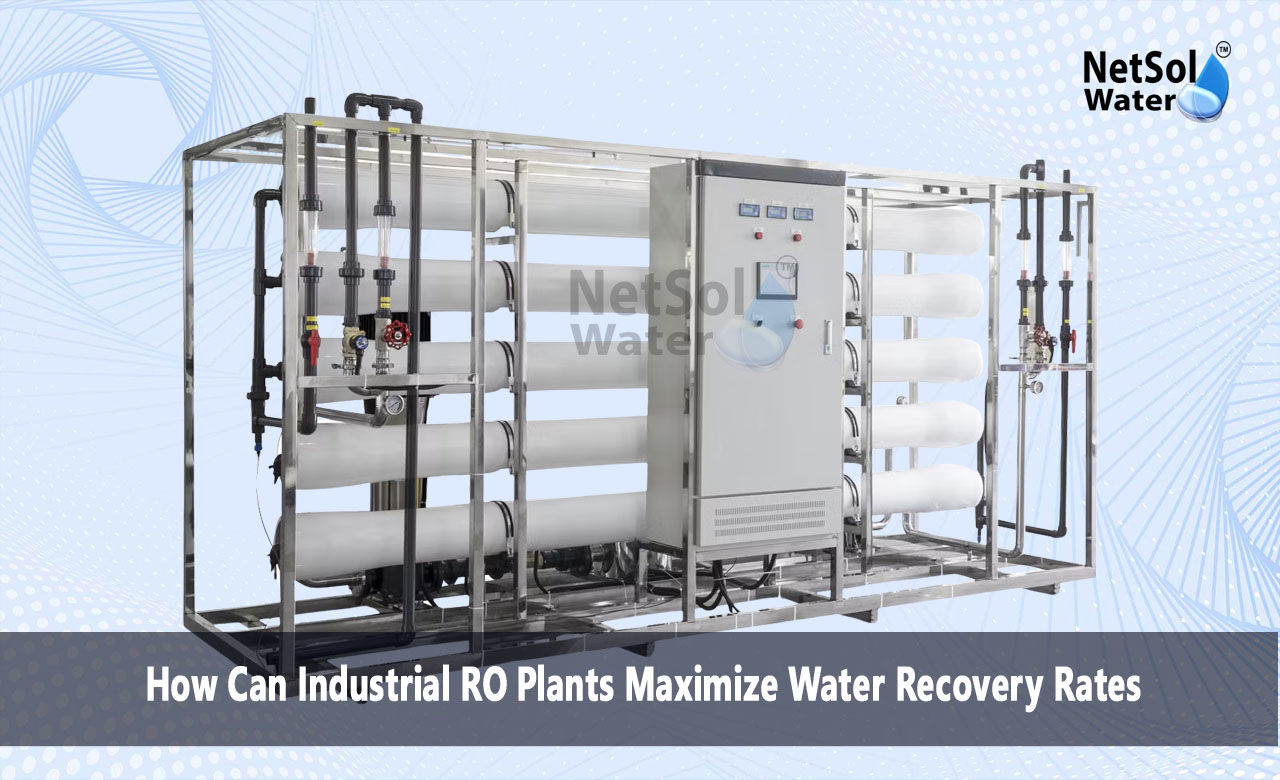How Can Industrial RO Plants Maximize Water Recovery Rates?
Water shortage is an acute problem in the majority of industrialized economies, where the continuously increasing demand for pure and fresh water is exerting extreme pressure on available resources. Reverse Osmosis (RO) technology has emerged as a preference for water purification, but it is a priority to maximize efficiency. One of the key performance parameters is the water recovery rate — the proportion of feed water converted into useable, treated water.
Improving this parameter means less wastage of water and more economical. That’s why understanding how industrial RO plants can maximize water recovery rates is essential for any water-intensive operation.
What Is Water Recovery Rate in RO Plants?
In RO plants, the recovery rate of water is the ratio of the amount of the incoming water (feed water) that is passed and recovered as permeate compared to that rejected as brine or waste. The more the recovery rate, the less is the water loss and the more sustainable.
For instance, if a plant treats 1000 liters of water and recovers 750 liters, then it has 75% recovery. The remaining 250 liters are generally rejected as waste or reject.
Thus, when we say industrial RO plants can maximize water recovery rates, we mean that certain methods are used to increase this percentage without affecting the water quality and membrane lifetime.
Methods to Optimize Water Recovery
There are several proven techniques through which industrial RO plants can maximize water recovery rates:
Multi-Stage RO Design
Instead of a single pass, the majority ofROplants now operate in various stages. The reject flow from the first stage is passed to the second stage. This cascading operation can raise the overall recovery level to 80–90% based on the system design and feed water quality.
Efficient Pretreatment
Correct pretreatment is essential. Excessive suspended solids, hardness, or organics in the feed water can quickly foul or scale the RO membranes. Pretreatment devices such as multimedia filters, softeners, antiscalant dosing, and micron filters are used to improve membrane efficiency so that more water can be recovered.
It is one of the main reasons why industrial RO plants can maximize water recovery rates if pretreatment is well attended to.
Use of Newer Membranes
Modern-day RO membranes are less susceptible to high recovery conditions. High-rejection and low-fouling membranes allow the plant to operate at higher recoveries without performance declines. Choosing the right kind of membrane compatible with your feed water is important.
Reject Water Recycling
The incorporation of a reject recovery unit or a brine concentrator helps recycle the reject water. It is especially helpful where there is a water shortage or regulatory requirements call for zero liquid discharge (ZLD). Recycling the concentrate helps industrial RO plants attain maximum water recovery levels without sacrificing compliance targets.
Permanent Monitoring and Cleaning
Automated units aid in tracking pressure, flow, TDS levels, and membrane performance. Cycles of periodic cleaning of the membranes by Clean-In-Place (CIP) avert scaling or fouling from decreasing recovery efficiency.
Challenges in Pushing for Higher Recovery
While it's better to achieve maximum water recovery, it also comes with its own challenges:
Scaling and Fouling Risk: As the water is recovered, the salts and impurities are becoming more concentrated, and the potential for scaling on the membrane is higher.
Increased Energy Consumption: More energy and pressure, especially in later stages, tend to be required with higher recovery.
Membrane Destruction: Aggressively seeking more recovery without proper controls can shorten membrane life.
Thus, when industrial RO plants maximize water recovery rates, it needs to be done with the best system design, efficient pretreatment, and continuous monitoring.
Role of Smart Technologies
Advanced technologies have made it easier to optimize recovery rates. SCADA systems, IoT sensors, and AI-performance-based analytics allow real-time monitoring of membrane status, water quality, and system efficiency. Operators can make informed decisions on when to clean the membranes or adjust flow rates.
Industrial RO facilities can minimize risks and human errors and optimize water recovery rates with such tools.
Cost Savings and Sustainability
Water recovery optimization benefits the company and the environment in a direct manner. With reduced wastage of water, there are:
· Reduced freshwater intake
· Lower wastewater treatment and disposal costs
· Environmental regulations compliance under strict guidelines
· Increased brand image as a sustainable producer
In water-intensive industries like textiles, food processing, pharma, and power plants, this practice is slowly turning out to be an accepted norm.
Conclusion
Industrial RO plants can maximize water recovery rates using multi-stage configurations, using innovative membranes, recycling reject water, and computerized monitoring. Although there are challenges in so doing, the benefit of cost saving, water preservation, and regulatory compliance makes it a feasible goal.
As water is a precious and limited resource, every drop recovered matters. Through smart planning and technology, businesses can make their RO plants lean, green, and clean operations that meet business requirements as well as environmental needs.
Do you need an advice or assistance on selecting the best water and waste water treatment unit? We have solutions for all your problems!
Let us know your problem, our experts will make sure that it goes away.
For an assistance or related query,
Call on +91-9650608473 Or write us at enquiry@netsolwater.com



